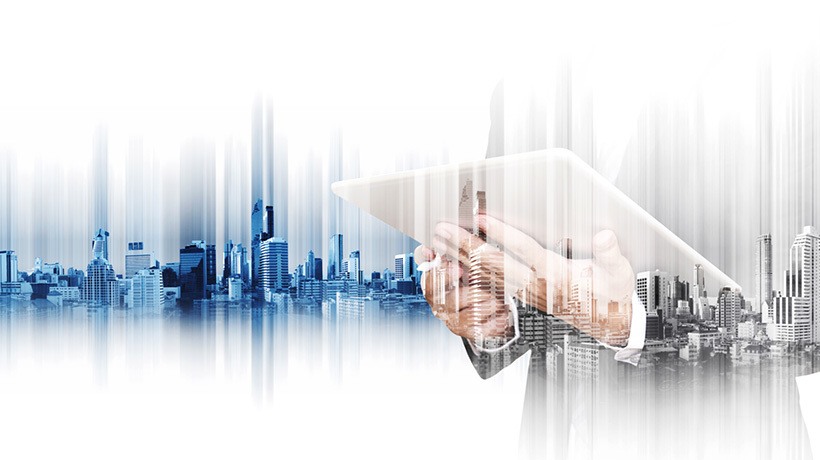The Essentials Of An eLearning Business Case
"Budget cuts" and "training," the stuff of a training manager’s nightmare! eLearning is often the first one to go on the chopping block when there are budget cuts in business. Remember the times you were left to fight in your corner as a training manager with decision-makers turning a deaf ear to your pleas? But here’s the thing, the results of learning programs are expected to be the same even with a fraction of the budget.

This makes eLearning the right choice for organizations as it can be done with less cost compared to a classroom ILT session and can be deployed anytime, anywhere. But knowing that eLearning is the best bet for your organization and convincing your managers about it are two entirely different things [1]. This is why you need a strong business case for eLearning to get their buy-in.
There are many studies and reports that point toward online training being as effective as conventional classroom training. All you need to do is use all the available information to present a convincing business case that stakeholders will find hard to say no to. But, how do you go about it? What should you include? Is there a way to get it right? Here’s a 7-point checklist to make a successful business case for eLearning which will make things easy for you!
A 7-Point Checklist For A Successful eLearning Business Case
1. Summarize The Business Case
The first step is to provide a high-level overview of your proposal for implementation. The information you present here should be as clear and concise as possible. What should you include in this summary?
- The business need
- Possible solutions to the problem
- The best solution and why
- The cost of the project
- The Return On Investment (ROI)
- Possible challenges and issues
- Expected timelines
It’s important to remember that some stakeholders will read only this section of the business case, so be sure you include all the key information. Also, keep the summary short and avoid giving away information that’s going to be covered later in the business case. Instead, use it to focus on the takeaways.
2. Explain The Business Needs
Highlight the business needs that can be met by implementing eLearning in your organization. For instance, the business needs may be to reduce the high rate of safety mishaps or increase the sales of a product. You can identify the needs through:
- Surveys
Know what learners, instructors, and supervisors expect from the online training program. - Training Needs Analysis (TNA)
This helps identify the knowledge or skill gaps of learners that online training can address [2]. - Existing data
Analyze existing data to discover patterns, trends, and preferences to provide guidance on the online training program.
State the current pain points, what needs to be done to address them, and how eLearning can help.
3. Provide The Solution
You can present alternative solutions if applicable. Apart from highlighting the benefits of implementing eLearning, you might want to present the consequences that could result from not choosing to adopt it. For instance, if you need to implement an online safety training program, the consequences of not implementing it would be far more severe if you factor in lawsuits, fines, and damage to life and property [3].
Also, use this section to describe:
- The process of finding solutions
- The cost and benefits of each solution
- The solution you think is best for your organization and why
4. Calculate The Cost
According to the 2019 Industry Training Report [4], training expenditures for large companies decreased from $19.7 million in 2018 to $17.7 million in 2019. The number for mid-size companies dipped $400,000 to $1.7 million in 2019. Stakeholders are spending cautiously, so you need to be very accurate when projecting the numbers.
For instance, if you have multiple solutions, you should explain each one in some detail. If you are not going with a low-cost option, you should try to justify the additional expenditure entailed by your choice.
Here’s a table you might find helpful:
| Item | Tip |
| License and software | Look at different pricing packages and figure out which one fits your budget. Do you want to pay per use or user? |
| Infrastructure and set-up | What will be the cost of running eLearning courses? What do you need to purchase for implementation? |
| Course development | Do you want to develop courses in-house—do you have the in-house expertise to do so? Do you want to partner with an eLearning vendor? |
Consider the initial cost as well as the costs related to support and maintenance. This helps ensure you don’t exceed the budget before the actual implementation.
5. Anticipate Challenges
Discuss potential challenges and the steps you will take to mitigate them. Some of the most common challenges you might face are:
- Resistance to change
Since it is going to be a new learning methodology, there’s bound to be some resistance to it. Ensure learners understand the real-world benefits of eLearning. Keep communication channels open to suggestions or feedback to make the training program better. - Death of good quality content
Whether you’re migrating from classroom training, adopting eLearning for the first time, or buying off-the-shelf courses, good content is critical for success. Ensure the content is consistent, relevant, and meets the learning needs. Avoid learner disengagement by incorporating new-age eLearning strategies such as personalization, gamification, and stories. - Lack of technical knowledge
Since your learners and administrators will be new to eLearning, they might have difficulties initially. If you have opted for outsourcing to an eLearning vendor, ensure that access to help is simple and quick.
6. Plan For The eLearning Implementation
Outline the steps to implement eLearning in the organization. Having a clear plan from the approval to the implementation along with a clearly defined timeline with the steps to the implementation is a great way to reassure the stakeholders. In the timeline, make sure to include specific milestones and the expenses involved in each one.
Here’s an outline of the steps to implement eLearning:
- Set relevant learning objectives
- Create a team of leaders for the implementation
- Arrange for IT and hardware requirements
- Migrate existing data to the new systems
- Customize learning programs
- Perform a test-run
- Go live
7. Highlight The Expected ROI
Stakeholders naturally are most interested in the Return On Investment. Obviously, they would want maximum profits from their investment in eLearning. You should highlight the factors that will contribute to the ROI of eLearning, including:
- Reduced training time
- Consistent learning
- Cost-saving on travel and accommodation
- Easier and better tracking of performance
- Shorter time to proficiency
Building a strong business case is your ticket to the stakeholders’ approval. Failure may result in sub-standard training which won’t help your ROI.
While this article was just about building a successful business case for eLearning, if you want to learn more and maybe become an eLearning champion, I know exactly how! The book "Become An eLearning Champion: A Practical Guide For eLearning Implementation" is filled with practical insights, implementation ideas, best practices, and more. It aims to empower learning professionals like you to champion eLearning in your organization. This book is a compilation of CommLab India’s 20 years of experience in Instructional Design, eLearning, corporate training, and technology-enabled learning. You can also download a preview of the first chapters and watch the relevant webinar for a more in-depth analysis.
References:
[1] Converting ILT to eLearning? Gain Buy-in Using the Kubler-Ross Curve
[2] 3 Levels of Training Needs Analysis in Corporate Learning (Part 3)
[3] Animated Videos for Safety Training – What Do They Offer
[4] 2019 Training Industry Report










